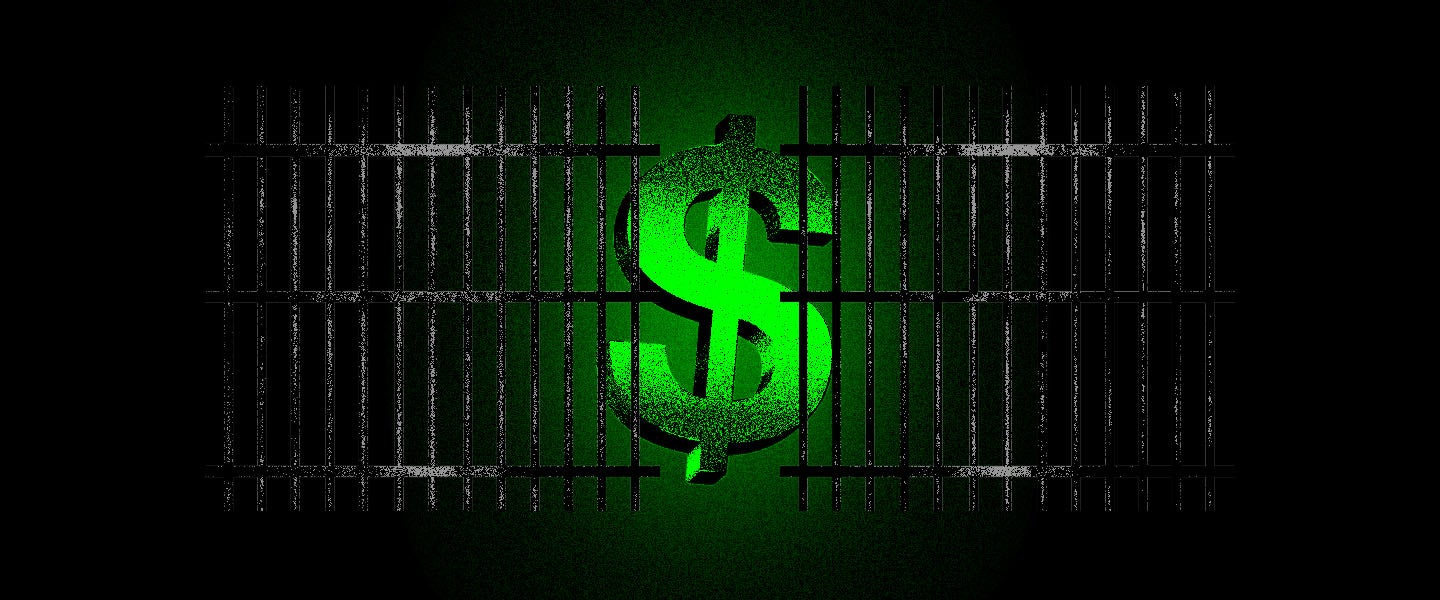You probably already assume that living conditions in the average prison cell are bleak, and you’d be right. The living space is small, rarely accommodating much more than a bunk bed and a makeshift bathroom area. But like outside those prison walls, in some places, you can upgrade your digs for the right price.
Before we dive into how these upgrades work, though, I want to emphasize that the baseline quality of prison cells varies greatly across the U.S. and is often dependent on the level of punishment that the individual prisoner has received. For instance, my colleague Andrew Fiouzi recently explored the living conditions in white-collar prisons, where financial criminals are usually sent, and he found that these prisons might provide TVs, all sorts of recreational activities and even kosher meals. Meanwhile, in maximum security prisons, where violent criminals are sent, getting your hands on something as basic as a pen can be nearly impossible.
With that in mind, let’s talk about how cash can be used to upgrade your living situation in prison. For starters, all federal prisoners have access to a commissary, where they can purchase numerous basic items, from snacks to toothbrushes and postage stamps. To have access to the commissary, you obviously need money, and to have money, friends and family on the outside have to send it to your commissary account.
As for which commissary items might make your cell feel a little more like home, here are a few things available at a low-security prison in Colorado, along with how much they cost:
- A portable fan: $28.80
- A radio: $37.05
- A book light: $12.95
- An alarm clock: $9.35
- Toilet paper: $2.50
- A laundry bag: $5.15
- A photo album: $6.20
Obviously, you’d be hard-pressed to call any of these “luxurious,” but in more recent years, numerous “pay-to-stay” city jails in Southern California have essentially started allowing convicts to buy their way into safer, more comfortable situations. Normally, city jails are small establishments, often serving as the local police department’s holding center for people either waiting to be charged or who committed minor misdemeanors and certain non-violent crimes (for a super old-timey reference, think of where Otis Campbell slept off his various benders on the Andy Griffith Show). Similar to all jails and prisons, the conditions in these smaller jails vary, but the consensus is that they’re generally more chill, especially compared to the notoriously rowdy county penitentiaries in California. According to a 2018 Salon post, these jails offer inmates “semi-private rooms, single showers and the ability to make phone calls whenever they want.” All of which are unheard of in regular prison.
As for what kinds of criminals are eligible for these pay-to-stay jails, that really depends on the judge dealing out their sentence. The most common sentences being served by pay-to-stay criminals are DUIs and other driving violations, which makes sense considering these aren’t necessarily violent crimes, and therefore, the prisoners are perhaps more deserving of a more lenient punishment. However, an analysis of people who served in pay-to-stay jails in Southern California from 2011 to 2015 found that 4.5 percent committed serious offenses, including assault, battery, domestic violence, robbery and sex crimes.
Again, it’s wholly dependent on a judge who’s willing to give you the spot — or perhaps a well-paid lawyer who’s willing to fight for you to have it. On the Santa Ana pay-to-stay program’s qualifying criteria list, for instance, they make little mention of what kinds of criminals are allowed, only noting that “not all charges will qualify for the program.” Instead, they simply say you must be at least 18 years old, approved by the court and in overall good health.
As for how much these comfy pay-to-stay jails cost, that also depends. Per an extremely thorough 2017 L.A. Times report, “Prices vary widely, with each city setting its own rate. Defendants can get a bargain-basement bed in La Verne for $25 a night or pay a modest $75 a night in Hawthorne. Or they can splurge, paying $198 a night in Redondo Beach or $251 a night in Hermosa Beach. Monterey Park even offers the option of serving time in half-day increments, for $51.” (Overall, the analysis mentioned above found that these programs took in nearly $7 million in five years.)
Needless to say, these pay-to-play jails are controversial, and for good reason: They began as a potential fix for prison overcrowding, which would help out criminals who committed lesser crimes and wouldn’t involve taxpayer money. But they’ve since evolved into a criminal justice system that basically gives inmates who have money to spend an advantage, sometimes no matter how serious their crime. In fact, the pay-to-stay prisoners in the L.A. Times report included the likes of a choreographer who had sex with an underaged girl; a former police officer who stalked and threatened his wife; and a college student who stabbed someone. The report more specifically names Alan Wurtzel, who spent $18,250 to serve a six-month sentence at the Seal Beach city jail, with amenities that included flat-screen TVs, a computer room and new beds, after he forced a woman to perform oral sex on him.
In this case then, crime pays — but in reverse, with the municipalities profiting from it. The question, of course, is, at what cost?

